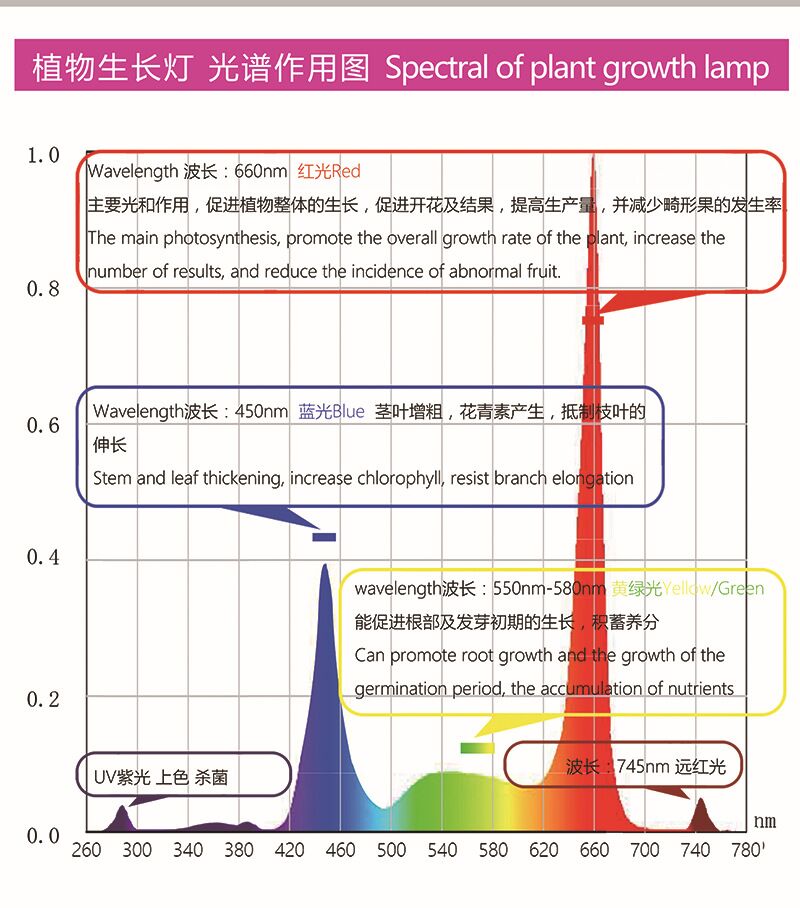How do the different light spectrums influence the growth of plants
280 nm UVC ultraviolet light
The visible wavelength of 280 nm is also referred to as the UVC ultraviolet range and can be toxic to plants. If correctly used at the right levels, this light can be used to minimise the growth of bacteria or mould and can be used to manage the growth and development of different parts of the plant, such as branches and heights.
280-315 nm UVB ultraviolet light
UVB ultraviolet light sits in the 280-315 nm and can negatively impact on plant colour.
315-400 nm UVA and near-ultraviolet light
UVA and near ultraviolet light from 315-400 nm is considered one of the longest UV light wavelengths and it can enhance plant pigmentation, thicken leaves and may even help manage insect populations. It’s at this wavelength that chlorophyll absorption starts and light is used to manage plant architecture and long-term health.
440-500 nm Blue light
From 440-500 nm this light plays a major role in plant quality and is needed to ensure that plant development is optimal, and optimised. This light, when used in conjunction with the other wavelengths ensures that the plant’s roots are developed properly, that growth is managed correctly, and that chlorophyll absorption is maximised. At this light wavelength leafy plants really do benefit the most.
510-610 nm Green light
510-610 nm, the green light, helps with photosynthesis and can help with improvements in plant size, weight and growth factors.
610-700 nm Yellow-red light
610-700 nm is considered the optimum wavelength for chlorophyll absorption, germination and flower or bud development. This wavelength is perfect for flowering and for photoperiodism. This light, when balanced with blue and green light, can translate into perfect plant growth and optimised yield.
700-800 nm Far-red light
700-800 nm increases the rate of photosynthesis and recent research has found that this can promote extension growth and has myriad benefits. This is proving to be one of the more interesting wavelengths recently and can be supported by the intelligent use of LED grow lights.
To correctly optimise your wavelengths to ensure that your LED grow lights are correctly aligned, placed and prepared, we can collaborate with you to ensure you get the best possible results.
2022年11月8日


